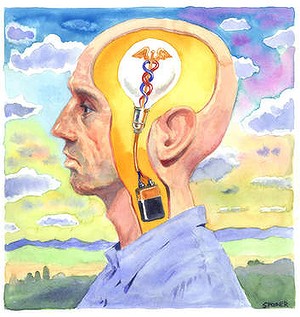
Illustration: John Spooner.
One morning in May 1998, Kevin Tracey converted a room in his lab at the Feinstein Institute for Medical Research in Manhasset, New York, into a makeshift operating theatre and then prepped his patient – a rat – for surgery.
A neurosurgeon, and also Feinstein Institute’s president, Tracey had spent more than a decade searching for a link between nerves and the immune system. His work led him to hypothesise that stimulating the vagus nerve with electricity would alleviate harmful inflammation. ”The vagus nerve is behind the artery where you feel your pulse,” he told me, pressing his right index finger to his neck.
The vagus nerve and its branches conduct nerve impulses – called action potentials – to every major organ. But communication between nerves and the immune system was considered impossible, according to the scientific consensus in 1998.

‘I think this is the industry that will replace the drug industry’ says Dr Kevin Tracey. Photo: New York Times
Nonetheless, Tracey was certain that an interface existed, and that his rat would prove it. After anaesthetising the animal, Tracey cut an incision in its neck, using a surgical microscope to find his way around his patient’s anatomy. With a hand-held nerve stimulator, he delivered several one-second electrical pulses to the rat’s exposed vagus nerve. He stitched the cut closed and gave the rat a bacterial toxin known to promote the production of tumour necrosis factor, or TNF, a protein that triggers inflammation in animals, including humans.
